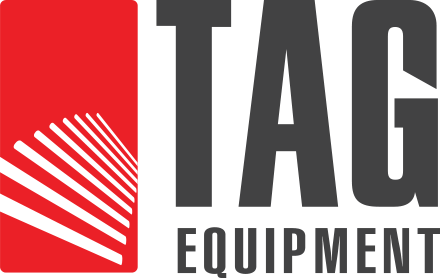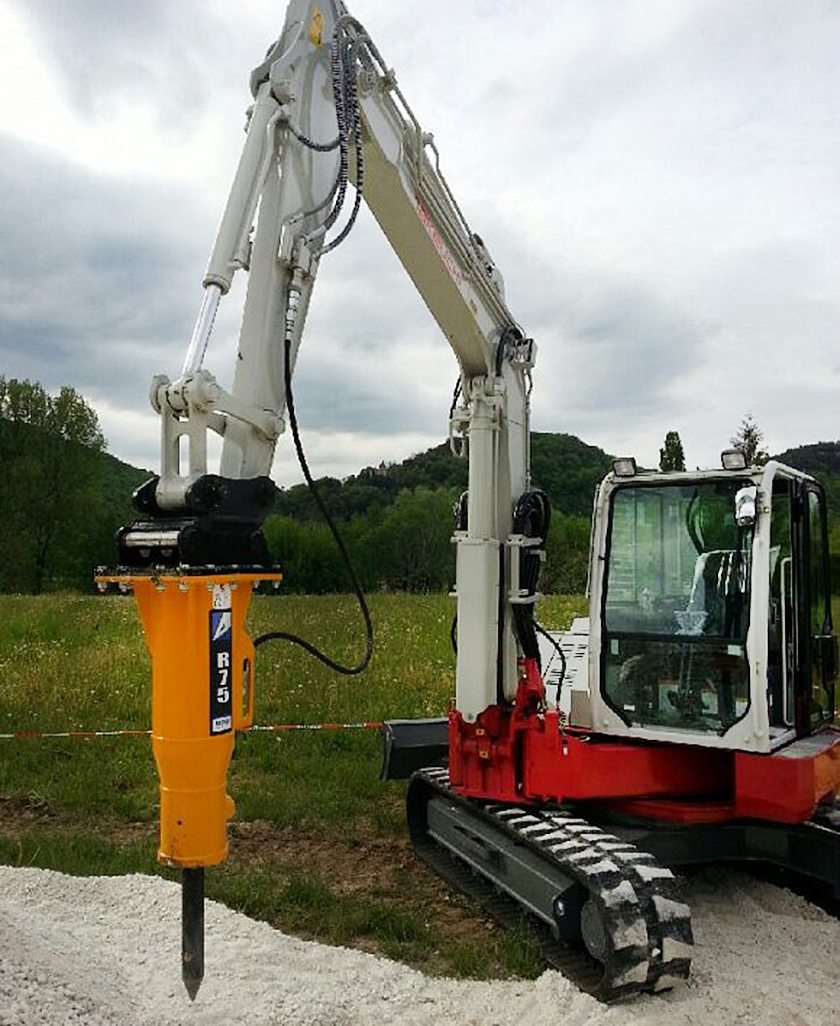A hydraulic hammer, also known as a hoe ram or demolition hammer, is typically used for excavation and demolition projects. Most contractors prefer to use a hammer attachment for skid steers and mini excavators to break asphalt, concrete, and rocks. Also, hydraulic breakers are often used to remove concrete piers and decks for demolition projects. If you are planning to purchase a hydraulic hammer attachment for your equipment, read on to learn more about selecting the right option.
6 Things to Know Before Choosing a Breaker Attachment
- Consider All the Options for a Hydraulic Hammer Attachment
When buying a hoe ram or concrete breaker, it helps to know that the working range of a mini excavator with a breaker is excellent. Also, when you require multiple accessories for a project, a breaker works well with other skid steer attachments because it can be on and off within seconds. It comes with features that are perfect for a variety of applications, such as water ports for dust suppression. - Think of the Application of the Breaker Attachment
In addition to sizing a breaker according to the make and model of your skid steer or excavator, you must also consider the intended application of the equipment. Since there are 3-4 different sizes suitable for your machine, keep the following in mind to select the right one:- Considering the auxiliary hydraulic flow requirements will help you narrow the options to 1-2 models.
- Then, think of the size of your equipment and its purpose to ensure you choose the right hydraulic hammer attachment.
- Remember, you will need a heavier model for high-duty applications.
- Consider the Flow Settings
The hydraulic attachments operate within a specified hydraulic flow and pressure. Ensure that the auxiliary circuit has adequate settings to manage the concrete breaker and maximize the performance. - Set Up a Maintenance and Operations Plan in Advance
Be sure to have a proper maintenance plan to prolong the attachment’s life, and keep the following in mind:- Grease the hammer attachment with a lubricant at least once every 2-3 hours of operation.
- Ensure that it is pressed in before applying grease.
- Conduct pre-use inspections to examine the bolts and bushing and retainer pins.
- Do not pry off the attachment from the equipment roughly.
- Understand the Importance of Nitrogen
Hydraulic flow and pressure are critical for hydraulic hammers. All breakers have some sort of a nitrogen charge to help enhance their performance. In the case of nitrogen assistance, although most breakers are fired by nitrogen, a few use a combination of nitrogen and oil. They consume less oil for similar impact energy and help decrease the operating expenses. - Think of the Preventive Features
Many breaker attachments come with new levels of protection to enhance their performance and lifetime value. Look at the improved designs to choose the right breaker for your compact loader or skid steer. Also, be sure to consult a reputable dealer.
5 Questions About Skid Steer Concrete Breakers
Can You Use Concrete Breakers for More Than Just Concrete?
Skid steer breakers are versatile attachments. In addition to demolishing concrete, they are ideal for the following applications:
- Rock Breaking: This attachment can easily break down large rocks or boulders.
- Trenching: They are perfect for digging trenches for utilities or landscaping.
- Pavement Removal: You can effortlessly remove asphalt and other surfaces.
How Do I Choose the Right Size of Concrete Breaker?
The factors to consider for selecting the appropriate breaker size include:
- Machine Capacity: Ensure your skid steer has the necessary hydraulic power to handle the breaker’s requirements.
- Attachment Compatibility: Verify that the breaker is compatible with your skid steer or excavator model.
- Task Requirements: Match the breaker size to the scope of your projects.
It is wise to research and discuss the specifications of the best concrete breaker for skid steers with your dealer to make an informed decision.
What is the Average Cost of a Hydraulic Breaker?
The cost of a concrete breaker varies based on aspects such as size, brand, and features. It is best to discuss your needs and the attachment price with your dealer before purchasing.
What are Some Risks Associated with Using a Breaker?
Although concrete breakers are indispensable tools, they do come with some risks.
- Operator Safety: The impact force of a concrete breaker demands skilled operation to prevent accidents or injuries. Wear appropriate safety gear, including helmets and eye and hearing protection.
- Structural Damage: Misuse of a breaker can cause unintended damage to your skid steer or surroundings. Ensure you are well-versed in operating it to avoid costly mishaps.
What is the Average Lifespan of a Concrete Breaker?
The life of a concrete breaker depends on usage, maintenance, and quality. With proper care, it can ensure a solid return on your investment.
Hydraulic Hammer & Breaker Attachments Ontario
Tag Equipment carries the best range of skid steer and mini excavator attachments at great prices. Our selection includes the following:
- Arrowhead Rockdrill – Specifically designed for reliability and quality. It uses less oil and is known for its powerful performance. It is ideal for heavy-duty applications at construction sites. Our new range of hydraulic hammers includes E480, E680, and E780 models by the brand.
- Paladin Attachments – Our Strike Force Breakers are perfect attachments for skid steer loaders and mini excavators that need a high breaking capacity. They are efficient for projects involving road maintenance, building refurbishment, and demolition.
If you are looking for a bobcat hammer attachment or a hydraulic hammer for a mini excavator, be sure to give us a call at 416-716-5850 or fill out our online form to discuss.

